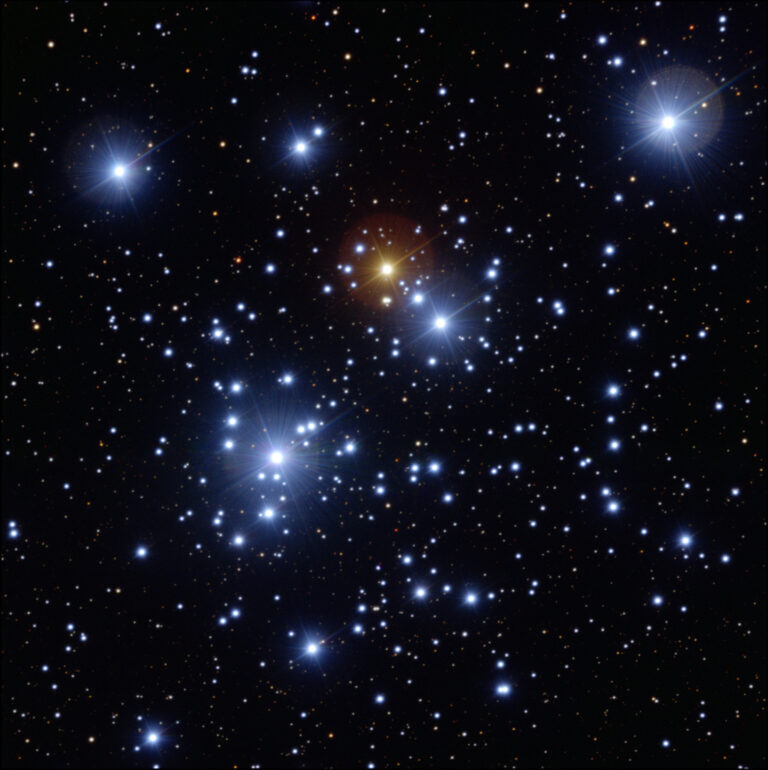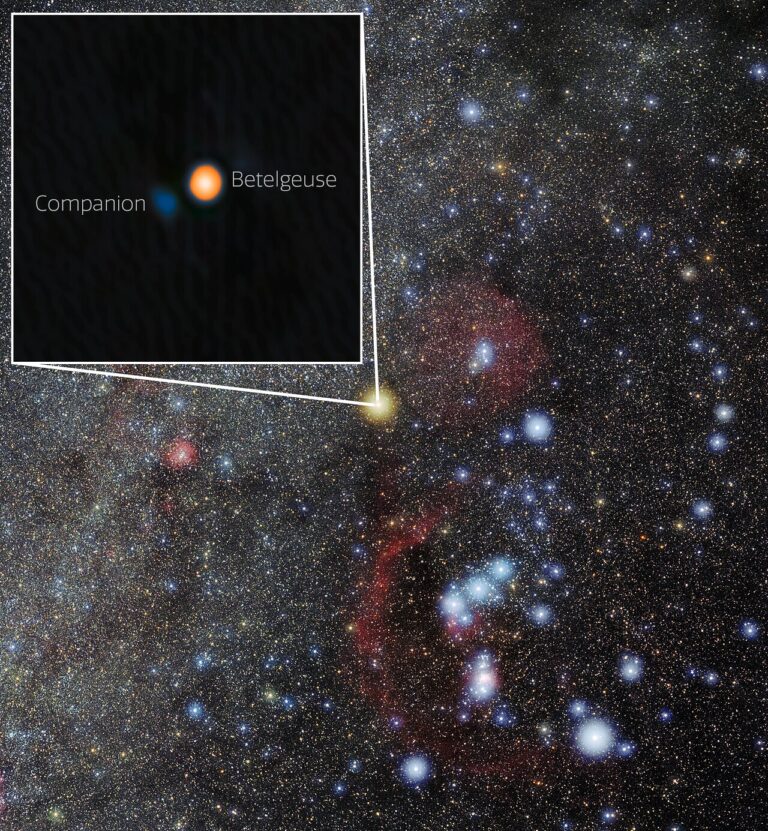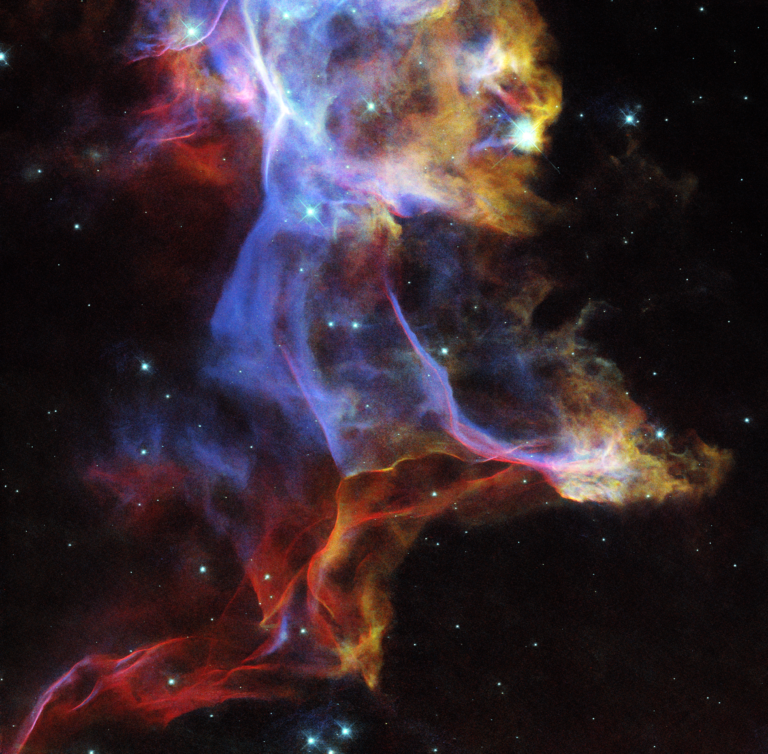Key Takeaways:
But if someone asked where our galaxy looks brightest, you’d correctly say Sagittarius. In pristine dark places where the Teapot asterism is overhead — the Southern Hemisphere — the Milky Way is so bright that it casts shadows. Its exact center is marked by the radio source Sagittarius A* (pronounced, “A-star”), which corresponds to the 4.3 million-solar-mass black hole around which our entire galaxy pivots. That visually rich region is a good reason to make a pilgrimage far south of your ZIP code. Down there, the Milky Way also runs through the Southern Cross, Crux, currently overhead in Chile and Australia.
But right now, you and I have no Milky Way. In April and May, the galaxy lies coincident with our horizon. So if you stargaze around 10 p.m., you look into the year’s darkest sky. Picture standing on a giant glowing pancake. That’s our current situation. When we look overhead this month, we stare directly out of our galaxy. Its glow is buried along the horizon, unseen.
The north galactic pole is now high up. That’s the spot 90 degrees from the galactic plane. It’s in Coma Berenices, which is a finalist in the Least Realistic Constellation Contest. It’s supposed to be the hairdo of a queen, but actually looks like 20-gauge buckshot. When we look that way, to the upper left of Leo, we’re gazing through our galaxy’s thinnest section into the yawning emptiness of intergalactic space. Happily, lots of distant galaxies lie in that direction, like the edgewise beauty NGC 4565 and the scarily massive ball-shaped M87. No foreground dust diminishes their splendor.
The paltry few hundred light-years standing between us and intergalactic emptiness when we gaze up high this month also means we see few stars overhead. It’s the year’s darkest sky.
Theoretically, this should make us happy. We astronomers are always fighting for “dark skies.” So this month, when we have it, why aren’t we ecstatic? Because we don’t really crave blackness. No, we crave a black background. In the foreground, we want lots of stars, and spring doesn’t accommodate us.
“WE ASTRONOMERS ARE ALWAYS FIGHTING FOR ‘DARK SKIES.’ SO THIS MONTH, WHEN WE HAVE IT, WHY AREN’T WE ECSTATIC?”
The Southern Hemisphere shows the same effect. Seemingly a zillion stars hover between Sagittarius and the Southern Cross and then onward through Puppis to the Dog Star. Yet elsewhere, where the South Celestial Pole lies near the Magellanic Clouds, vast celestial acreage is eerily forlorn.
So the night is dramatically non-uniform. Huge, barren tracts fill our pre-midnight spring sky. If you have one of those nifty devices for measuring sky quality, you get your darkest readings now. And because nebulae and open star clusters follow the Milky Way, those are absent, too.
Stepping outdoors atop the Big Pancake may seem to offer slim pickings. In spring, if you don’t own a big enough scope to get good views of other galaxies, you may be tempted to abandon astronomy and take up, say, taxidermy. Does the overhead galactic pole signal depression? Do we require therapy? Lie on the couch. Let’s see if we can find murk’s bright side.
To heck with brilliance. Forget the stars. We still have globular clusters, which don’t inhabit the galactic plane. May also delivers 2016’s best planetary views, including Mars reaching its closest and biggest appearance in over a decade. If the nearest large city is a few time zones away, you might also catch the dim, dreamy zodiacal light tapering upward from spring’s western horizon. And speaking of faint esoterica, the easiest quasar — the ravenous black hole center of a faraway active galaxy — is also up these nights. That’s 3C 273, in Virgo.
We have the Big Dipper at its very highest. Its handle curves toward brilliant Arcturus, the only spring star nobody mispronounces. And we have our own geeky fellowship of observers, whose friendly faces are never more welcome than when illuminated by starlight.
At least, what there is of it.
Contact me about my strange universe by visiting http://skymanbob.com.









